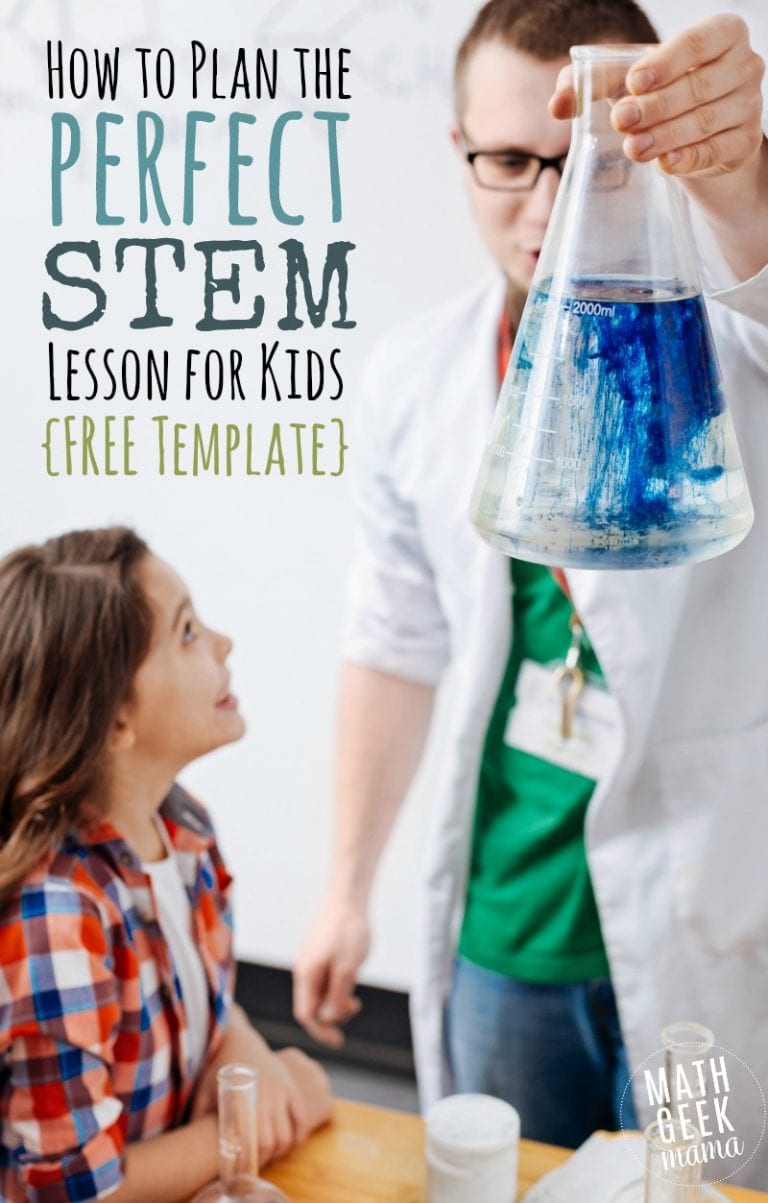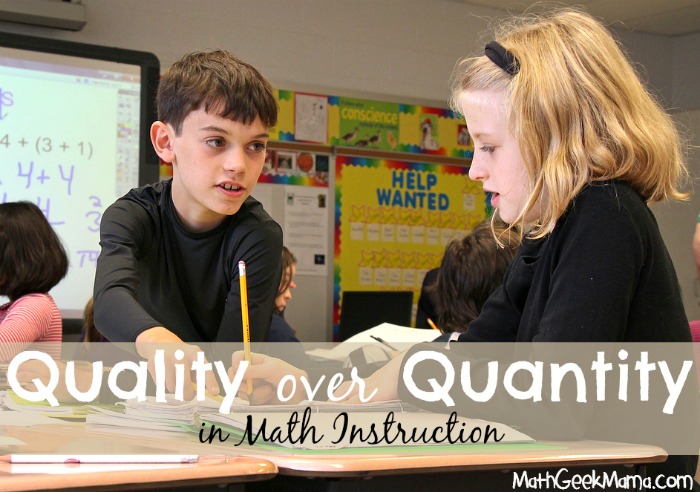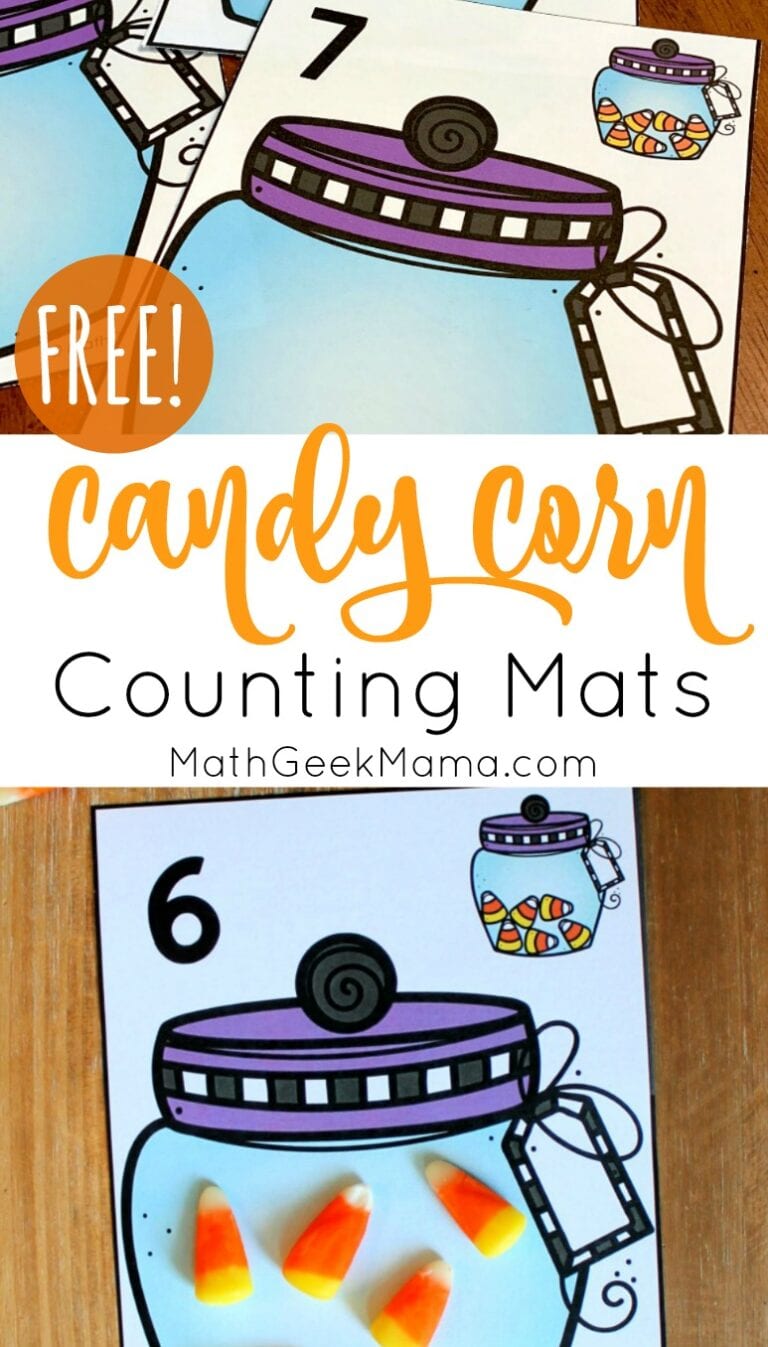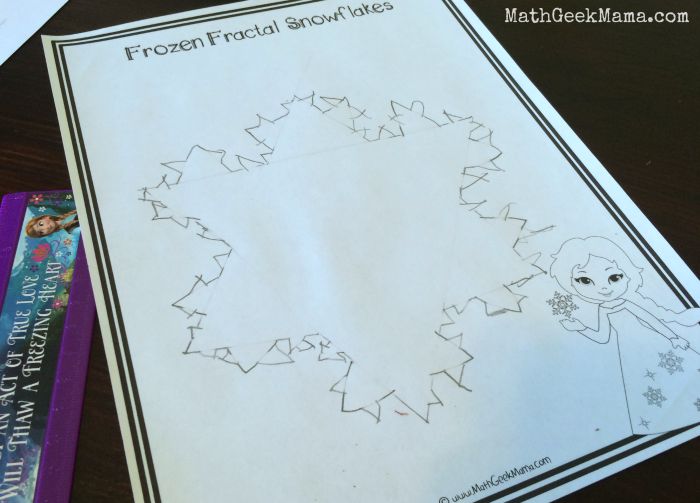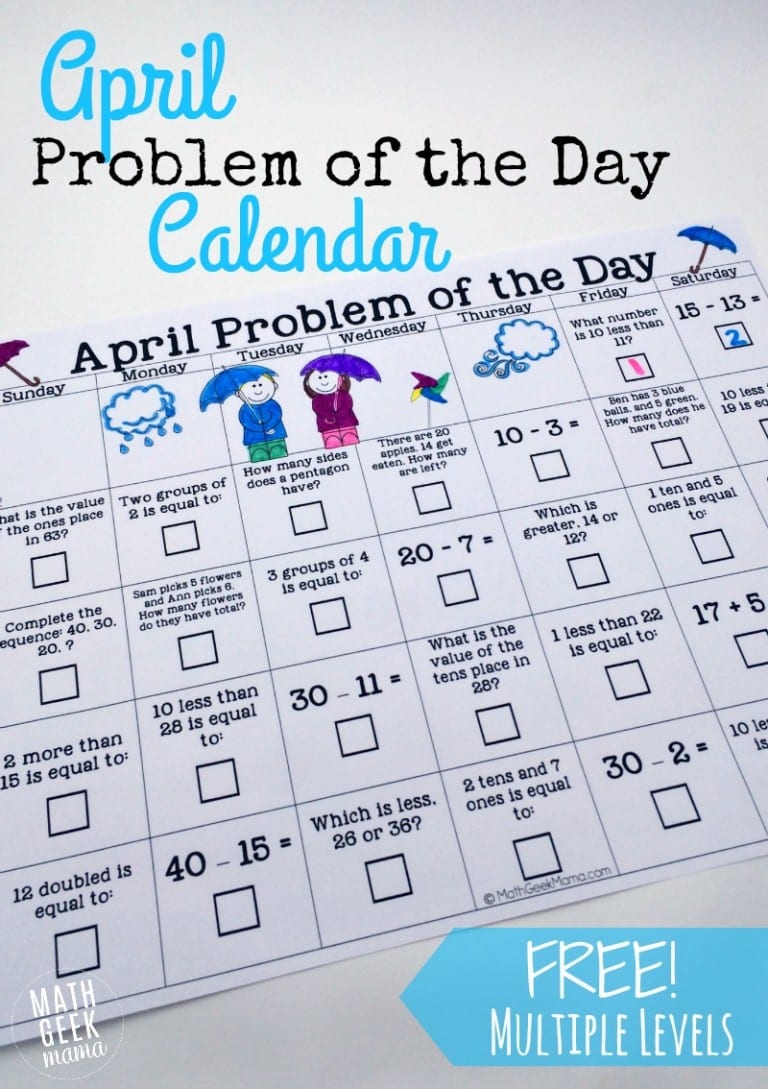Build Math Habits: Notice Math Patterns & Structure
Mathematics is the science of patterns. Encourage your students to look for and make sense of math patterns & structure in order to deepen understanding and retain what they learn.
Welcome back to my series on the Standards for Mathematical Practice! I have enjoyed reading and thinking through different ways we can foster these habits in our classrooms and encourage kids to think deeply about math.
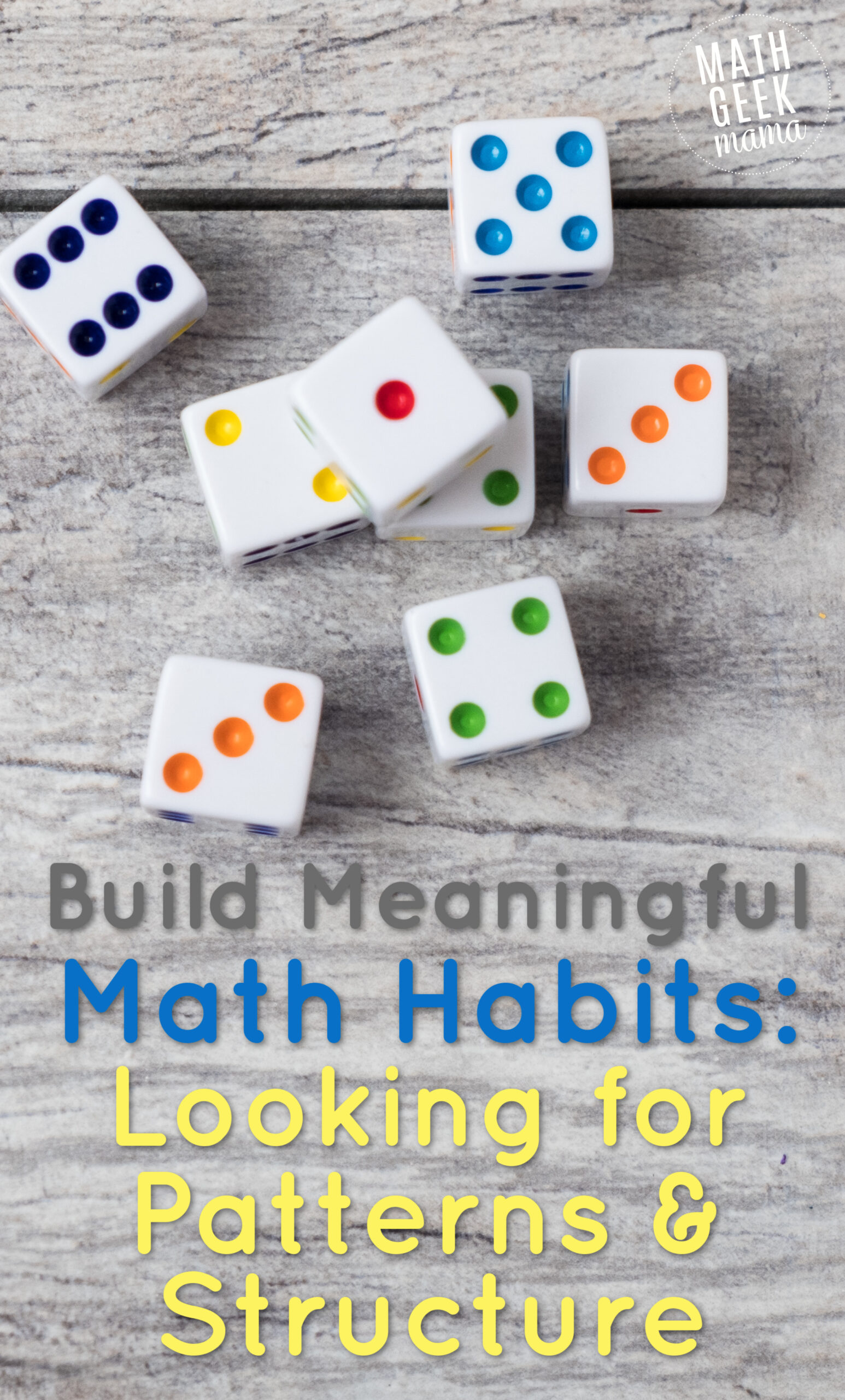
*Please Note: This post contains affiliate links which support the work of this site. Read our full disclosure here.*
Today I want to focus on the last two math practices that we want students to work towards/be comfortable doing:
1. Look for and make use of structure and
2. Look for and express regularity in repeated reasoning.
To be honest, unlike some of the other standards, these don’t seem as immediately clear what they’re referring to. But hopefully rephrasing them a bit and looking at some examples will help to clear up any confusion (although maybe you’re not as confused by these statements as I was, LOL).
Look for Patterns & Structure
Looking for and making use of structure means to look for and see patterns in numbers, pictures, computation, or properties.
For little ones, it might be noticing different ways to decompose the same number using a pattern or structure rather than random guessing.
Take the number 8 for instance–you can start with 0+8, and then increase one addend while decreasing the other–> 1+7, 2+6, 3+5, and so on.
By noticing the pattern or structure of the math facts, the student has made use of that structure to find all the possible facts.
With enough time and exposure, students may also notice mathematical properties such as the commutative property or distributive property. They can begin to make connections and see expressions or computation in lots of different ways.
This type of fluency and flexibility with numbers and operations is called number sense and it is certainly not something you can simply teach in a day and then move on to the next thing.
These are habits and skills that will require time and intentionality on your part in choosing tasks that give kids the opportunity to see patterns and structure.

Form Generalizations Based on Patterns
Let’s consider the last standard now, which I believe is related to the first: look for and express regularity in repeated reasoning.
I would sum this up as meaning students can form generalizations and rules based on what they observe in computations.
For example, it is often a light bulb moment when students realize they can count up to find the difference between two numbers (22-19, for example).
By seeing the subtraction as the difference between the two, they have discovered a more efficient method of solving than counting backwards.
Another example is multiplying by multiples of 10. Rather than telling students, “When you multiply a number by 10 you add a 0, when you multiply a number by 100 you add 2 0’s, etc.” let them work out several examples either on paper or with place value tiles. After enough examples, they will begin to see the repetition and pattern that emerges, but actually understand why the product now ends in a zero based on place value.
I know I’ve already mentioned this, but one of the best ways to consistently provide the time and exposure kids need is with number talks.
Because number talks focus on mental math, students are forced to set aside the standard algorithms they know and find a more efficient method and become more flexible in how they think about numbers and computation.
There are other ways to provide practice with patterns and generalizations though.
Playing with a calculator is a fun way for kids to see what happens with repeated operations (for example, what happens with you multiply by -1 over and over again? What happens when you multiply by 2 over and over? etc.)
Another way to encourage kids to look for patterns or structure is with a notice and wonder prompt. For this activity, you simply show a picture, math problem, visual pattern, etc. to students and have them record a few things they notice and a few things they wonder (what questions do they have about what they see?)
This can help them to at least begin to start noticing and thinking about patterns and structure that they may have never given a thought to before.
I have linked to a free notice and wonder journal below that you can use, as well as several other resources, websites and articles that may help you with these standards.
Ultimately, the goal is that students feel comfortable deviating from a known procedure to look for a pattern and find a shortcut or more efficient strategy. Getting kids to that place of being comfortable trying new ideas can be a challenge (especially for older kids who have been trained to think that there is one method, one procedure), but providing the right tasks and allowing time for productive struggle will help them develop these skills.
Resources to Help You Explore Patterns & Structure:
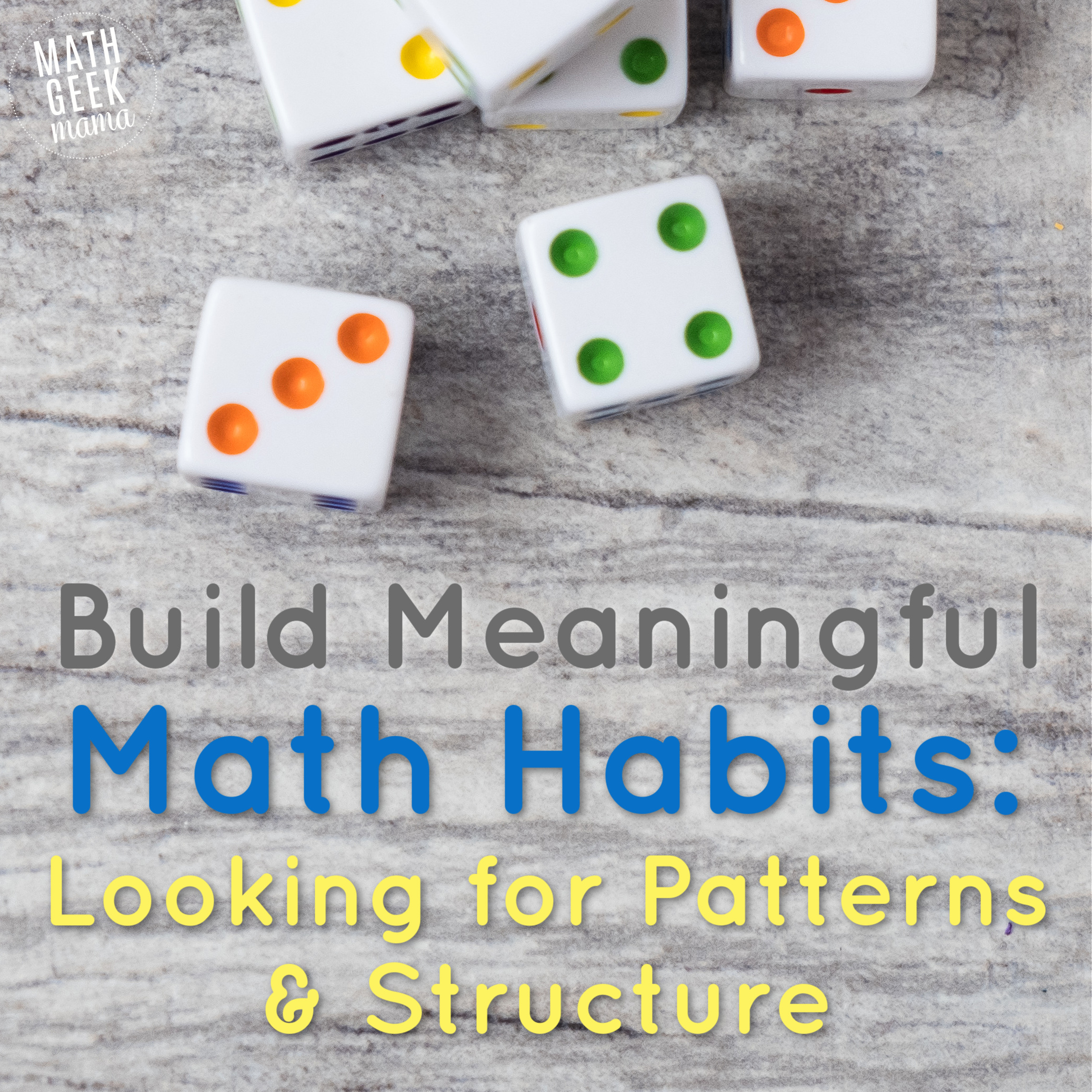
Ready to get started? The following resources will help you find ideas for your students to explore math patterns & structure, as well as an additional website that offers visual patterns to explore. I hope this is helpful!
- Help kids see patterns in addition & subtraction with pumpkin seeds
- Help kids see how multiplication & division are related with this roll & write challenge
- Read more about using a calculator to explore & discover
- Use tables to explore multiplication & division
- Another example of using tables to find a pattern
- Find visual patterns to generalize at VisualPatterns.org
- Notice & wonder journal | instant download!
Ready to Dig Deeper?
If you are enjoying this conversation and want to learn even more about visualizing patterns and forming general rules or shortcuts, I go into much more depth than I had time for here in my courses, Making Math Visual, Meaningful Number Talks and Thinking Deeply: How to Incorporate Meaningful Writing into Math Class.
Although all of my courses are available separately, they are truly designed to work together to provide a foundation for math teaching in K-8. All together, the 6 courses include 8 hours of professional development, which you have lifetime access to. If you work through one course per week, you could easily complete all of them.
>>Learn more about all the courses HERE
FREE Math Practice Standards Poster Set!
Want to explain these math habits to your students? This fun and free set of posters provides a springboard for discussion as well as a visual reminder all year long.
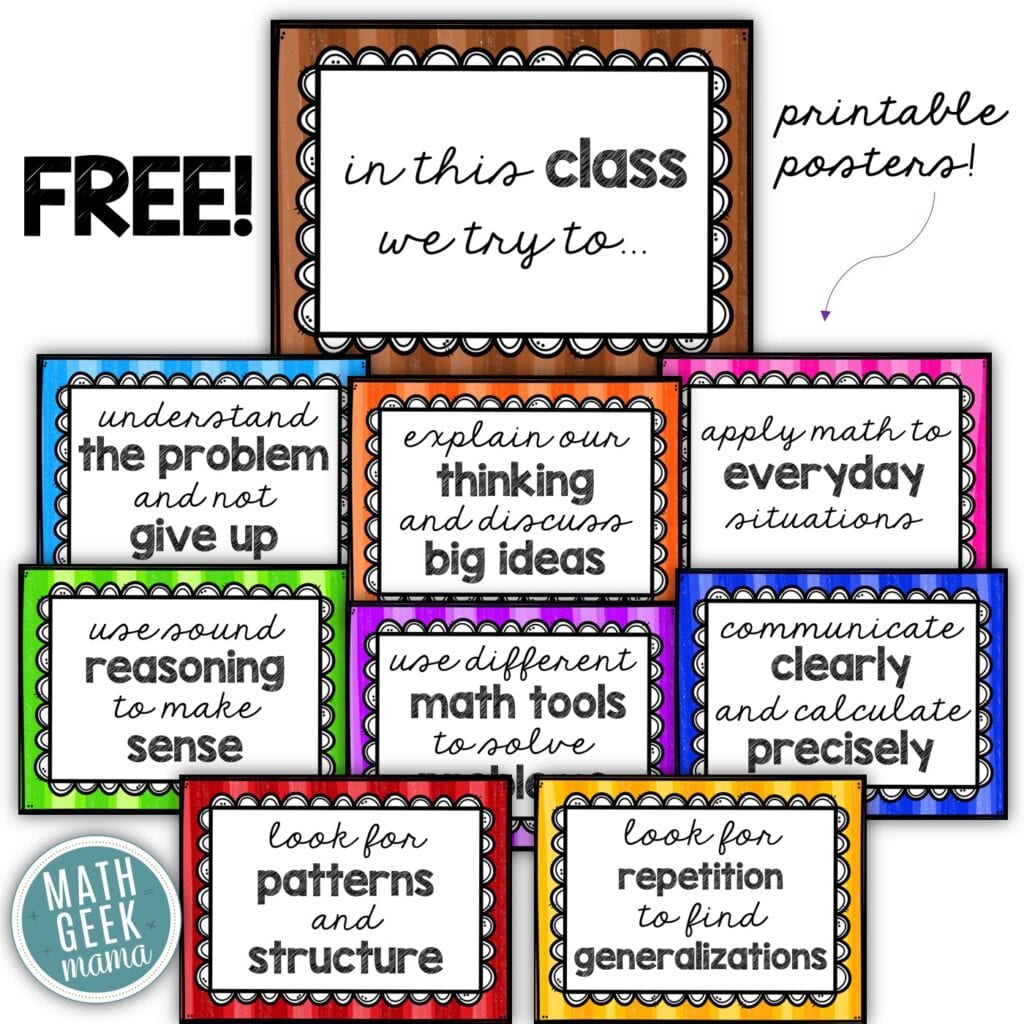
There are two versions included in this pdf file. One includes a cursive font and the other includes only manuscript fonts so you can use these with younger students.
I’ve also adjusted the wording of some of the standards so that is uses more kid friendly language.
Grab this free poster set by entering your email below!



